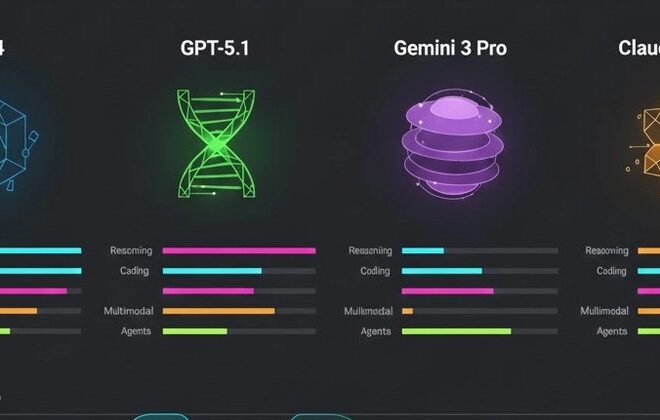
AI as the Next Battleground: Why Android’s Open Ecosystem is Poised to Redefine the Smartphone Wars
For over a decade, the smartphone market has been defined by a familiar rhythm of incremental hardware upgrades. Each year brings faster processors, sharper cameras, and brighter displays. While these advancements are welcome, they represent a maturing industry where revolutionary leaps are increasingly rare. The next true paradigm shift, however, is already underway, and it’s not about hardware—it’s about intelligence. The integration of sophisticated, proactive, and generative Artificial Intelligence is set to become the primary battleground for mobile supremacy. In this new era, the fundamental architectural differences between Android and iOS could prove decisive.
While Apple has built a fortress of seamless integration and user privacy, it is Google’s deep-rooted expertise in AI, combined with the sheer diversity and competitive nature of the Android ecosystem, that positions it to potentially out-innovate its rival. The future of mobile isn’t just about what your phone can do, but what it can anticipate, create, and automate on your behalf. As we look toward the next generation of Android Phones and Android Gadgets, the race to build the most intelligent personal companion will determine the market leader for years to come.
The AI Foundation: Where We Stand Today
To understand where the mobile industry is headed, it’s crucial to appreciate how far AI has already come. What began as a novelty has evolved into a core component of the modern smartphone experience, moving from simple reactive commands to complex, proactive assistance. This evolution has been powered by significant advancements in both software algorithms and the specialized hardware designed to run them efficiently.
From Novelty to Utility: The Evolution of Mobile AI
In the early days, mobile AI was largely synonymous with voice assistants like Siri and Google Now. These tools were impressive for their time, allowing users to set reminders, ask for weather forecasts, or perform web searches with their voice. However, they were fundamentally reactive, waiting for a direct command to perform a task. The real shift began when these systems started becoming proactive. Google Assistant, for example, began to surface relevant information—like a flight delay or traffic conditions for your commute—before you even asked.
Today, AI is deeply embedded throughout the operating system on modern Android Phones. Computational photography is perhaps the most visible example. Google’s Pixel line, powered by its Tensor chipset, uses AI to achieve stunning results with features like Night Sight for low-light photos, Magic Eraser to remove unwanted objects, and Real Tone to accurately capture diverse skin tones. Samsung has followed suit with its “Galaxy AI” suite, introducing features like Circle to Search, which allows users to intuitively search for anything on their screen, and Live Translate for real-time conversation translation. This is a far cry from simple voice commands; this is AI fundamentally enhancing the core functions of the device.
The Hardware Underpinning: NPUs and Specialized Silicon
These sophisticated software features would not be possible without corresponding hardware innovation. General-purpose CPUs are inefficient at handling the massive, parallel calculations required for machine learning tasks. This led to the development of dedicated Neural Processing Units (NPUs), also known as AI accelerators. Google’s Tensor Processing Unit (TPU) in its Pixel phones is a prime example, designed specifically to accelerate the AI models that power its most advanced features.
Similarly, Qualcomm’s Snapdragon chipsets feature a powerful AI Engine, and MediaTek has its APU (AI Processing Unit). This specialized silicon is critical for two reasons. First, it enables on-device AI, where processing happens directly on the phone rather than being sent to the cloud. This drastically reduces latency, making features like real-time translation feel instantaneous. Second, it enhances privacy and security. By keeping sensitive data like photos, messages, and biometric information on the device, the risk of cloud-based data breaches is minimized. The latest Android News is often filled with announcements about the next generation of these powerful, AI-focused chips.
Android’s AI Advantage: The Power of an Open Ecosystem

While Apple’s walled garden approach provides a consistent and secure user experience, Android’s open and diverse ecosystem creates a fertile ground for rapid, competitive innovation in the AI space. This advantage stems from a combination of Google’s foundational AI leadership, a competitive hardware market, and a more flexible developer environment.
Google’s AI-First Strategy and Deep Integration
Google is, at its core, an AI company. Its decades of research in machine learning, natural language processing, and computer vision through divisions like DeepMind and Google AI provide it with an unparalleled technological foundation. This expertise is not just academic; it’s directly integrated into the Android platform. Services like Google Photos, Google Maps, and Google Search are powered by some of the most advanced AI models in the world, and the data from these services creates a powerful feedback loop for improving them further.
With the introduction of its powerful Gemini family of AI models, Google is doubling down on this strategy. Gemini is being integrated across Google’s product suite, from the cloud down to the device level with Gemini Nano. This allows for powerful generative AI capabilities—like summarizing recordings, drafting emails in your personal style, or creating images from text prompts—to run efficiently on a growing number of Android Phones. This deep, vertical integration from the foundational model to the end-user application is a strategic advantage that is difficult for competitors to replicate.
The Diversity of Hardware and OEM Innovation
Unlike Apple’s singular hardware pipeline, the Android world is a bustling marketplace of manufacturers, including Samsung, Google, Xiaomi, OnePlus, and many others. This intense competition forces original equipment manufacturers (OEMs) to differentiate themselves, and AI has become a key battleground. While Google pioneers features on its Pixel devices, Samsung pushes the envelope with its Galaxy AI, integrating unique features into its One UI software skin and S Pen stylus.
This diversity extends beyond just phones. The ecosystem of Android Gadgets—from smartwatches and foldable devices to tablets and smart displays—provides a wider canvas for AI experimentation. Each form factor presents unique opportunities for AI-driven user experiences. A foldable phone might use AI to intelligently manage multi-window layouts, while a smartwatch could leverage AI for more advanced health monitoring and predictive alerts. This “survival of the fittest” environment ensures that the best AI ideas are rapidly developed, tested, and adopted across the market.
Redefining the User Experience: What an AI-Powered Android Looks Like
The true impact of this AI revolution will be a fundamental shift in how we interact with our devices. The current app-centric model, where users manually open and navigate different applications to complete tasks, will gradually give way to a more fluid, intent-centric experience. Your phone will evolve from a collection of tools into a proactive assistant that understands your context and anticipates your needs.
The Proactive, Context-Aware Operating System
Imagine a future where your phone’s home screen is no longer a static grid of icons but a dynamic surface that adapts to your situation. In this vision, the OS acts as an intelligent layer that orchestrates information and actions from various apps.
Real-World Scenario: You have a flight scheduled for the afternoon. Without any prompting, your AI-powered Android device could:
- Monitor your calendar and flight status in real-time.
- Check current traffic conditions and notify you of the optimal time to leave for the airport.
- Automatically surface your digital boarding pass and gate information on the lock screen as you approach the terminal.
- Suggest downloading a new podcast or playlist from your favorite app for the flight duration.
- Upon landing, it could present a notification with options to book a ride-share to your hotel, whose address it has already pulled from your confirmation email.
This entire workflow happens seamlessly, without the user needing to jump between five or six different apps. The AI understands the user’s ultimate intent—”get to my destination smoothly”—and proactively coordinates the necessary steps.
Generative AI and a Cohesive Ecosystem
The rise of on-device generative AI models like Gemini Nano will unlock even more powerful capabilities. This technology will move beyond simply understanding and organizing information to actively creating and assisting. For example, Magic Compose in Google Messages can rewrite your texts in different tones, from professional to enthusiastic. Future iterations could help you draft complex emails, summarize long articles on the fly, or even generate custom images for a social media post directly within the app you’re using.
This intelligence will extend across the entire ecosystem of Android Gadgets. Your smartwatch, earbuds, and phone will work in concert. Your watch might detect signs of stress in your voice and heart rate during a difficult call, and your earbuds could subtly suggest a calming playlist or a short breathing exercise once the call is over. This cohesive, intelligent network of devices, all powered by a central AI, represents the ultimate vision of ambient computing—where technology fades into the background, providing assistance intuitively and invisibly.
Navigating the Path to an AI-Centric Future
While Android’s potential in the AI era is immense, the road ahead is not without significant challenges. Realizing this vision will require overcoming long-standing platform issues and effectively countering the strengths of its primary competitor, Apple.
Android’s Fragmentation Challenge
Android’s greatest strength—its diversity—can also be its greatest weakness. The term “fragmentation” refers to the vast array of different hardware configurations, screen sizes, and modified versions of the Android OS running in the wild. This makes it difficult to ensure that advanced AI features work consistently and reliably across all devices. An AI feature that runs flawlessly on a high-end Google Pixel with a Tensor chip may perform poorly or be entirely unavailable on a budget device with a different processor and less RAM. Google’s efforts with Project Mainline to standardize core OS components are a step in the right direction, but ensuring a high-quality, uniform AI experience across billions of devices remains a monumental task.
Apple’s Privacy-First Counterargument

Apple has masterfully built its brand around user privacy and security. As AI becomes more integrated into our personal lives, accessing our messages, photos, and location, privacy concerns will intensify. Apple will undoubtedly position its AI strategy as “privacy-first,” emphasizing its commitment to on-device processing via its Neural Engine. This is a powerful marketing message that resonates with consumers.
To compete, the Android ecosystem must not only match Apple’s privacy features but also effectively communicate them to users. Google is already making strides here by pushing more processing on-device with Gemini Nano and offering tools like the Privacy Dashboard. However, overcoming the public perception that Android is inherently less private than iOS will be a critical battle in the war for the AI-powered future.
Tips for Consumers
For those in the market for new Android Phones, the evaluation criteria are changing. Instead of focusing solely on megahertz and gigabytes, consider the device’s AI capabilities. Look for phones with dedicated NPUs or AI engines in their chipsets. Pay attention to the manufacturer’s commitment to long-term OS updates and feature drops, as many AI enhancements are delivered via software. Reading the latest Android News and reviews can help identify which brands are truly innovating in the AI space versus those that are just using it as a marketing buzzword.
Conclusion: The Dawn of the Intelligent Device Era
The smartphone industry is at a pivotal inflection point. The race for hardware supremacy is giving way to a more complex and consequential competition centered on artificial intelligence. The next decade of mobile innovation will be defined not by the physical object in your hand, but by the intelligence that powers it. While Apple’s formidable ecosystem and brand loyalty cannot be discounted, the unique structure of the Android world—fueled by Google’s deep AI expertise and the relentless, competitive innovation of its hardware partners—gives it a powerful strategic advantage.
The journey toward a truly proactive, context-aware mobile experience is just beginning. As this technology matures, it will fundamentally reshape our relationship with our devices, transforming them from passive tools into indispensable personal assistants. For consumers, this AI-driven future promises a new level of convenience and capability, making the choice of their next smartphone more important than ever.



